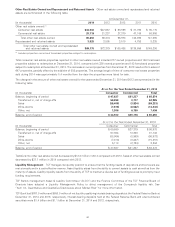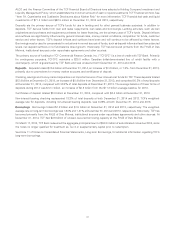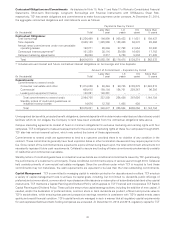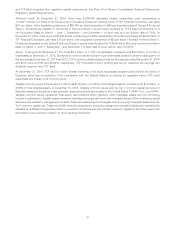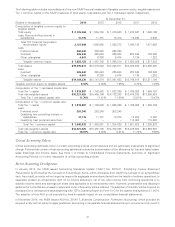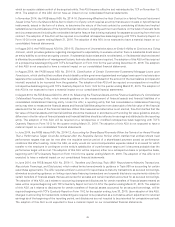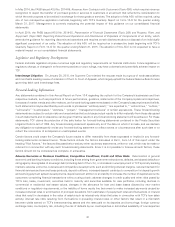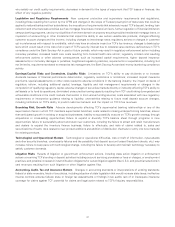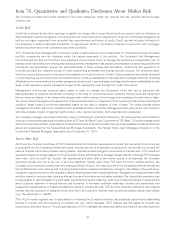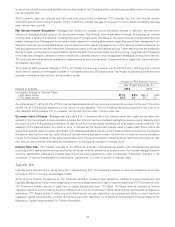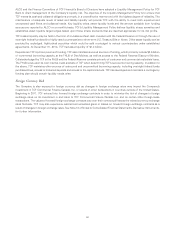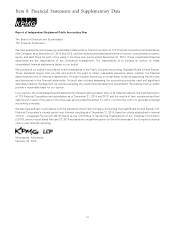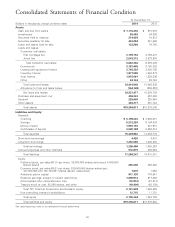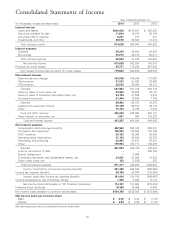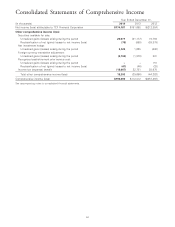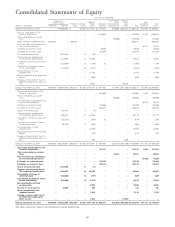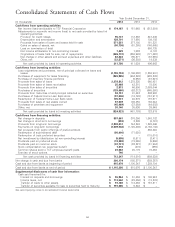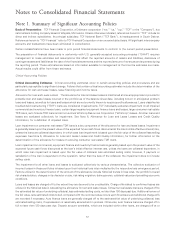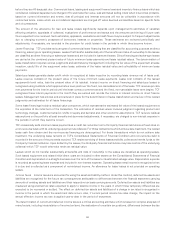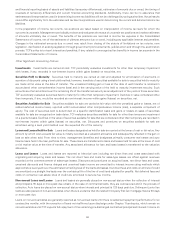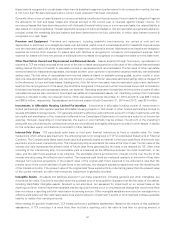TCF Bank 2014 Annual Report Download - page 63
Download and view the complete annual report
Please find page 63 of the 2014 TCF Bank annual report below. You can navigate through the pages in the report by either clicking on the pages listed below, or by using the keyword search tool below to find specific information within the annual report.ALCO and the Finance Committee of TCF Financial’s Board of Directors have adopted a Liquidity Management Policy for TCF
Bank to direct management of the Company’s liquidity risk. The objective of the Liquidity Management Policy is to ensure that
TCF meets its cash and collateral obligations promptly, in a cost-effective manner and with the highest degree of reliability. The
maintenance of adequate levels of asset and liability liquidity will provide TCF with the ability to meet both expected and
unexpected cash flows and collateral needs. Key liquidity ratios, asset liquidity levels and the amount available from funding
sources are reported to ALCO on a monthly basis. TCF’s Liquidity Management Policy defines liquidity stress scenarios and
establishes asset liquidity target ranges based upon those stress scenarios that are deemed appropriate for its risk profile.
TCF’s asset liquidity may be held in the form of on-balance sheet cash invested with the Federal Reserve or through the use of
overnight federal funds sold to highly rated counterparties or short-term U.S. Treasury Bills or Notes. Other asset liquidity can be
provided by unpledged, highly-rated securities which could be sold or pledged to various counterparties under established
agreements. At December 31, 2014, TCF had asset liquidity of $1.4 billion.
Deposits are TCF’s primary source of funding. TCF also maintains secured sources of funding, which primarily include $2.6 billion
of incremental borrowing capacity at the FHLB of Des Moines, as well as access to the Federal Reserve Discount Window.
Collateral pledged by TCF to the FHLB and the Federal Reserve consists primarily of consumer and commercial real estate loans.
The FHLB relies upon its own internal credit analysis of TCF when determining TCF’s secured borrowing capacity. In addition to
the above, TCF maintains other sources of unsecured and uncommitted borrowing capacity, including overnight federal funds
purchased lines, access to brokered deposits and access to the capital markets. TCF has developed and maintains a contingency
funding plan should certain liquidity needs arise.
Foreign Currency Risk
The Company is also exposed to foreign currency risk as changes in foreign exchange rates may impact the Company’s
investment in TCF Commercial Finance Canada, Inc. or results of other transactions in countries outside of the United States.
Beginning in 2011, TCF entered into forward foreign exchange contracts in order to minimize the risk of changes in foreign
exchange rates on its investment in and loans to TCF Commercial Finance Canada, Inc. and on certain other foreign lease
transactions. The values of forward foreign exchange contracts vary over their contractual lives as the related currency exchange
rates fluctuate. TCF may also experience realized and unrealized gains or losses on forward foreign exchange contracts as a
result of changes in foreign exchange rates. See Note 18 of Notes to Consolidated Financial Statements, Derivative Instruments,
for further information.
50


